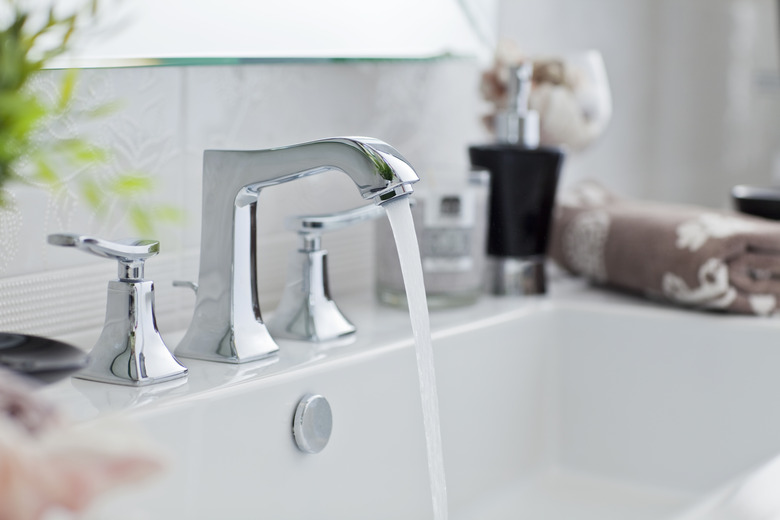How To Remove Corrosion On Bathroom Faucets
We may receive a commission on purchases made from links.
Tap water qualities can differ greatly, depending on where you live. But it's important to understand the properties of your tap water as it can have a surprisingly big effect on your faucets. Metal can be prone to corrosion if it's unstable in its environment. When you add tap water into the mix, the process can happen far faster.
There are several ways to treat mineral buildup or the beginnings of corrosion on bathroom taps and possibly restore them to looking shiny and new once more. Once treated, you can also use a few tricks to help prevent the corrosion and mineral buildup from happening again.
What Is Corrosion?
What Is Corrosion?
Corrosion refers to any metal's breakdown due to contact with the environment, whereas rust refers more specifically to the oxidation of iron and iron alloys. Bathroom faucets are in near-constant contact with water. This means they can be especially prone to corrosive damage — particularly if your tap water is more acidic.
Low tap water pH can be the primary source of faucet corrosion. At first, corroded patches on taps can start out as a minor aesthetic issue, but over time they can become more serious.
First, Clean the Faucet
First, Clean the Faucet
The first step in treating corroded bathroom faucets is to clean them properly. Start with simple dish soap and water to remove any dirt and then go in with white vinegar to cut through any remaining stubborn grime and mineral buildup.
Treating Bathroom Faucet Corrosion
Treating Bathroom Faucet Corrosion
Gentle acids are the best way to treat the beginnings of faucet corrosion. Soak your faucet in white vinegar for around five minutes to loosen the corroded patches; then scrub with a sponge. Repeat the process if necessary until all of the corrosion is removed. If you don't have any vinegar, you can substitute either lemon juice or a cola drink, as they are similarly acidic. After treating faucets with any of these products, thoroughly rinse and dry them.
Another way to treat rust, in particular, is by rubbing your faucets down with aluminum foil, according to Bob Vila. Balled-up foil when dipped in water gently scrubs the rusted areas, while the aluminum can help remove rust via a chemical reaction.
It is important to know when to cut your losses too. If left untreated, corrosion can become far more difficult to remove. Corrosion could be the perfect opportunity to replace older or dated-looking bathroom faucets. New bathroom faucets can be purchased fairly inexpensively, are easy to install and can breathe new life into an older sink.
What Is Mineral Buildup?
What Is Mineral Buildup?
Alongside corrosion, you may notice a flaky, white buildup on your faucets. This isn't corrosion but a buildup of mineral deposits. Minerals deposits on your faucet are not the same thing as corrosion, although they can promote corrosion on your fixtures. You can also remove mineral or scale buildup on your faucets by using gentle acids like vinegar, lemon juice or cola. Keeping your taps free of scale can help slow down corrosion too.
Bathroom Faucet Maintenance
Bathroom Faucet Maintenance
Once you have your bathroom faucets back in good condition, it's important to look after them so they stay that way. Polishing with something like Brasso after cleaning can help prevent corrosion from creeping back. It's also important to be gentle when cleaning your bathroom faucets. Any overly abrasive cleansers or scrubbers can cause damage to the surface of the metal, which can leave it more prone to corroding.
If you notice any patches of corrosion forming, it's important to treat them as soon as they appear. Corrosion can spread quickly, so the real key to treating bathroom faucet corrosion is starting as early as possible.
